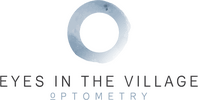Dry Eye, IPL and Radiofrequency
Eyes in the Village Optometry, located in Winnipeg, offers total eye health services that allow our doctors to provide total ocular and optical wellness. We provide eye exams to detect visual and optical anomalies. Our advanced technologies allow our Doctors of Optometry to diagnose and treat dry eye, one of the chief complaints of many patients! Once diagnosed with dry eye, OTC eye drops, hot compresses, medications and even light therapy for dry eye (IPL) or heat therapy (Forma) can be used to treat your symptoms and get you back to living and seeing comfortably.
While we prescribe and sell eyewear and contacts, we provide much more. We are committed to ocular health for our patients. Our advanced vision care includes testing for multiple disorders of the eyes, including dry-eye, glaucoma, macular degeneration, glaucoma and cataracts.
Dry-Eye
The vast majority of our patients report symptoms of dry eyes. Dry eyes are caused by a lack of adequate tears or when the fluids in the eyes evaporate quickly, preventing adequate lubrication of the eye. The most common type of dry eye is evaporative dry eye, where the glands that help secrete lipids or fats into your tears become clogged with age or due to inflammation. There are a lot of factors that can contribute to dry eyes, such as reading for long periods of time at an odd angle or being in a windy atmosphere or dry home environment. The non-environmental factors can be easy to address by using simple home remedies such as artificial tears or warm compresses. If your dry eyes are accompanied by redness and irritation or pain/burning, or even contact lens discomfort it is time to consult a doctor.
Dry eyes are not always the result of environmental factors. Decreased tear production is a problem that can lead to dry-eye syndrome. Dry-eye syndrome is most common in women over the age of 50. It is also common for people who wear contacts or whose diets are low in Vitamin A or who stare at computers or digital devices for long periods. When your eyes cannot produce adequate tears, you may experience symptoms of dry-eye syndrome that may include:
- Light sensitivity – which may lead to difficulty driving at night
- Blurred vision or fluctuating vision
- Eye irritation – itching, pain, burning or stinging, grittyness or sandy feeling
- Fatigued eyes, often after staring at digital devices
- Unusual mucus in or around the eyes, discharge in the morning
- Red eyes resulting from irritation
Medical Intervention for Dry-Eye Syndrome
Dry-eye syndrome can be a chronic condition that gets progressively worse if not treated. Talk with our doctors, dry eye experts, about medical advances in the treatment of dry-eye syndrome including immunomodulators such as Restasis or Xiidra. Other medical options include Amniotic Membranes, Autologous Serum Eye Drops and Steroid/Antibiotics if needed.
Intense Pulsed Light Therapy (IPL)
IPL is a light energy therapy originally used to remove irregular skin discoloration. It was discovered during the treatment of skin disorders such as Rosacea that IPL was also very effective as a dry eye treatment.
IPL is a non-invasive and painless procedure that is done in the doctor’s office. Intense pulses of light are applied underneath and above your eyelash line. Typically, the only sensation patients feel during the procedure is the application of moderate heat or a elastic-band sensation. Recovery is overnight. Many patients report improvement after only one treatment, though several may be required.
Radiofrequency Therapy (RF)
This non-invasive dry eye treatment can be performed in our doctor’s office. It uses Radio-Frequency energy to generate heat which is applied to the skin around the eyes. This heat induces the dermal heating required to stimulate collagen formation, bringing white blood cells, anti-inflammatory mediators and stem cells to the skin around your eyes. This new collagen production stimulates the tightening of the skin, eliminates fine lines and circles under the eyes. Most importantly, it significantly aids in opening up clogged tear glands, allowing for improved tear production and secretion. This treatment is most often used along with Meibomian Gland Expression. 3-4 treatments are typically needed and touch-ups yearly!
